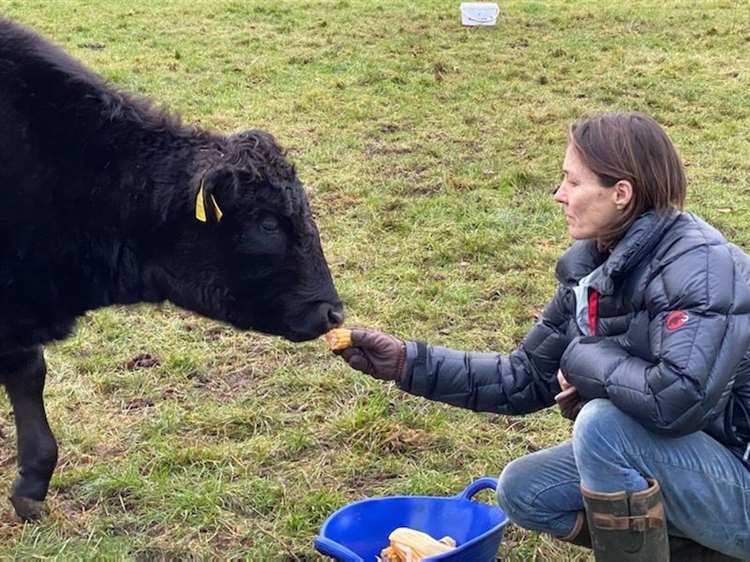The road to Pasture for Life certification
 (Photo: PfL Project Manager, Sarah Juggins)
(Photo: PfL Project Manager, Sarah Juggins)
Overcoming the odds through collaboration
When Hannah Thorogood, Rebecca Mayhew and Sarah Juggins got together to chat about their plans for delivering the Royal Countryside Fund ‘Farm for the Future Programme’, they found themselves discussing their journeys towards Pasture for Life certification.
All three farmers are yet to achieve certification but for very different reasons and their experiences or situations will resonate with many of our PfL members. During the meeting the intrepid trio made the decision to each take the next steps necessary to achieving certification.
Over the course of the next few months, we will be outlining their respective journeys via written articles and video interviews.
Following on from our interview with Hannah Thorogood in which a hugely busy lifestyle and paperwork were identified as two of the main inhibiting factors, in this article Sarah Juggins will outline her own situation and identify some of the barriers and challenges she faces as she attempts to transition to a pasture-fed system.
‘One of the first challenges I faced as I contemplated rearing pasture-fed cattle was actually perception,’ says Sarah.
As someone who is building a herd of Wagyu, there is a common belief that high quality meat such as Wagyu must be finished on a high energy diet. Books and papers have been written about the various ways of finishing Wagyu, including barley grains as by-products from the brewing process, olives or apple pulp. Sarah says: ‘When I was talking to other wagyu breeders and said I was hoping to finish them on hay and grass, there was a general shaking of the head and pitying glances.’
However, a little more research that goes past the attention-grabbing headlines and there are plenty of people who finish Wagyu on a grass and hay diet. The key is giving the animals time to mature.
A more pragmatic problem for the Norfolk-based Wagyu breeder is finding enough acreage for the herd.
Sarah owns a few acres of paddocks but rents most of her grassland. She has developed a good relationship with two neighbouring farmers and now has 30 acres of grassland that is part of the farm’s rotation. The grass is left in place for four years and then a new field is planted with a legume and grass seed mix. She moves the semi-permanent post and wire fencing and a large in-out shelter to the new pasture with the help of a fencing contractor.
At the same time, another neighbouring farmer allows her to graze some permanent grass land as well as some fields that are in Countryside Stewardship schemes – this latter grazing is only available for certain periods of the year.
She also takes hay from areas of CSS on both farms.
‘I could run a completely pasture-fed system if the circumstances were right,’ says Sarah. ‘The cattle are all out-wintered, with sheds they can choose to go into. The grass this year has been plentiful, once we got past the very dry start to the year and I expect it will be viable grazing until at least the end of October. I then have plenty of hay.’
The problem occurs when there is a weather incident such as the drought in 2022. For Sarah, whose grass just stopped growing from June onwards, this was a disaster. She fed the majority of her stock of winter hay during the months of July, August and September because there was nothing for the cattle to graze.
She then had to turn to a neighbour who was able to supply pea-lage for the entirety of the winter.
‘Without that source of local feed, I would have easily have been carting in hay at an extortionate price or I would have needed to sell the majority of the herd.’
Sarah and her farming landlords are now talking about ways they can build resilience into the cattle business. A new set of fields has become available, adding another 18 acres into the mix. This is a mixture of GS4, which can be grazed most of the year and AB8, which can be grazed in late summer and autumn. The landlord has had this fenced and water is piped to the fields, making life a lot easier.
This is one step along the way. Over the coming months, Sarah hopes to share other measures that will help her achieve her ambition of rearing high quality, high welfare Wagyu cattle in Norfolk.



